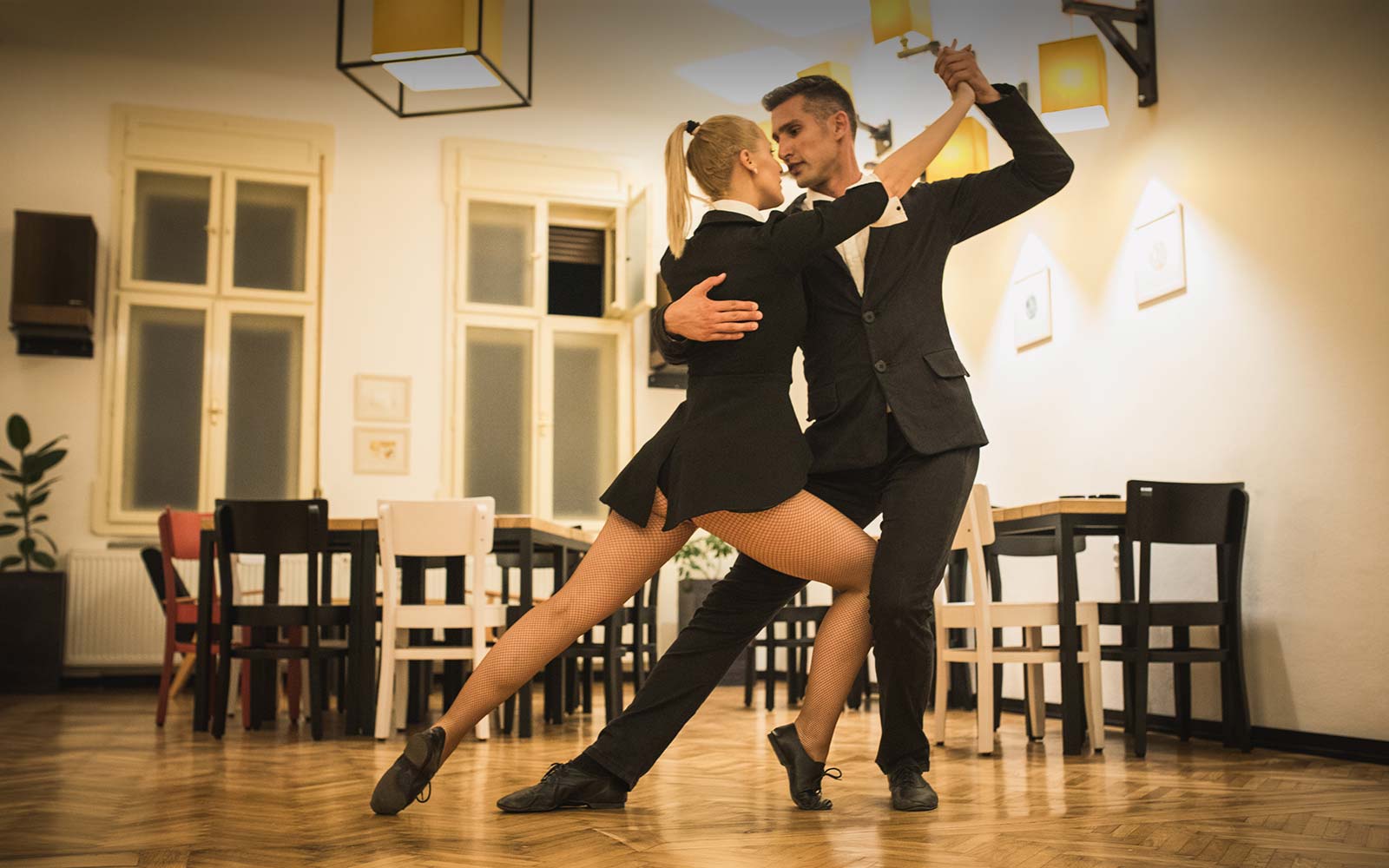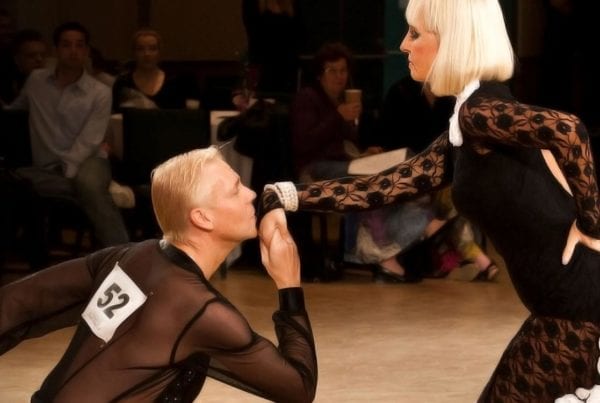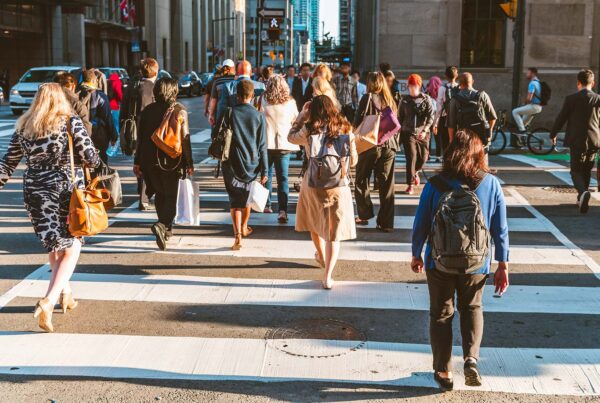During a breakfast meeting with my kinesiologist this morning, we talked about body movement and techniques for developing power for body flight through the proper use of the legs. It was a great meeting, with insights that I wanted to share with you.
Since we were the only guests on the White Spot patio so early in the day, we used the opportunity to get up and demonstrate various issues related to dance movement. Guests inside the restaurant probably wondered what on earth those two guys were doing out there, but it was super valuable for me to have someone with his knowledge of body mechanics provide information.
Mark believes that the human body was built to move, and that you deserve to, in his words, “love yourself to the core.” It doesn’t matter what we choose as a favorite activity, as long as we commit to moving regularly. This is the key to maintaining an enjoyable lifestyle long into your twilight years. As you get older you want to live life, not just be alive.
Unfortunately, this pandemic has kept far too many people sitting around, and sitting is the worst thing for the human body. Mark says that the effect on the body due to gravity is highly damaging when we sit for extended periods of time, as blood pools in the waist and upper legs, unable to circulate freely the way it should. This affects a huge number of organs and the general way that the body’s engine works. Think of a car that sits unused for years. It will eventually break down. Staying active is the most important thing we can do for ourselves.
Posture
Next is the issue of how we hold ourselves. We can’t get away from gravity, and this affects our posture. A strong core helps us to maintain good posture, reducing the negative impact of gravity on other body parts like our spine. Mark said that when our bodies are finely tuned (athletes and many dancers, especially those at higher skill levels, have strong, well-tuned cores), we can even sit in unusual ways and still be relatively unaffected. We can slouch or lean back or twist while sitting in a chair without a negative impact on our long-term spinal health. But most people aren’t finely tuned and this is where things often break down. Most people don’t have much awareness of their posture or how they move until they take up an activity like dance. Without years of dance, running, cycling, or similar athletic experience behind you, daily habits like slouching a certain way on the couch can lead to many spinal issues that can take years to correct.
Mark pointed out that hips can often play a role in poor posture, because how we position them affects other bones and muscles. For example, if your right hip is injured or weak, your body will naturally compensate using your left shoulder. Over time, this impact can cause spinal deformation or misalignment that can be challenging to correct.
So how do we stand up properly to improve our posture?
Posture begins with the hips
Mark says that the secret to great posture begins with the use of the hips. From the hips down, we should become very heavy into the floor. We need to allow our body weight to settle into our legs through the hips. Think of draping something on a coat hanger. A lightweight fabric won’t pull the item down, while a heavy fabric will create a weight that you can feel and see. That should be us from our waist down. We also use the hips to generate movement, but I’ll get to that shortly.
From the waist up, we lift the rib cage and pull down on the lats (upper back) to help lengthen the spine. So, in a way you are pulling down from the hips to the floor and pulling your spine up from the hips to the neck.
Using the hips in Ballroom
You may think that the hips only play a role in movement for Latin dances, but the hips are super important for proper use of energy and swing in the Ballroom and Smooth dances. I’ve known this for some time, but I’ve only thought about it from the viewpoint of generating power as the moving leg collects. We use the hip to help counterbalance our energy to develop more power from the standing leg.
Mark agreed with this but said that I’m thinking about it too late in the process. He pointed out that the hip actually needs to be involved before the swing action even begins.
the hip actually needs to be involved before the swing action even begins
Swing energy, which I’ve written about before, can only happen forwards or backwards. You can’t possibly swing sideways because a pendulum swing can’t begin from a static position, but must start from the top of the swing to generate energy. Mark explained that we need to begin applying the power generated by the hip from the back leg even before we move that leg to create the swing. That generates power already so that we can swing effectively. Only then, as the moving leg arrives next to the standing leg as it goes through the bottom of the swing, do we apply the contra hip rotation to counter balance our power, allowing us to amplify the energy of the swing for greater body flight. This is where you can allow the hip to rotate back, like a sitting action, to build power for movement.
As the moving foot swings forward, we need to use CBM (Contra Body Movement). This applies the opposite side of our rib cage to control our energy and maximize forward momentum. During this CBM action, if our upper body is constrained due to inactivity, we limit our own freedom to move.
To illustrate this, Mark did an interesting experiment. Holding one hand flat against my chest and the other firmly against my back, he asked me to move my head around as well as forward and back, and to try CBM. It was surprisingly difficult, feeling constrained. My spine was locked. He pointed out that this shows the importance of the spinal cord in being able to allow free movement of our core. When we are too constrained, or stiff, in the upper body, it affects our ability to move efficiently. Applying the technique of lifting the spine from the waist up helps to free the body to be more pliable.
These ideas apply to Latin dances, but dancers already know the importance of hip rotation in Latin dance. You probably also understand the need to apply contra hip action in Tango, creating that low sitting down posture. What is often ignored or misunderstood is the use of hips in the swing dances of Ballroom and Smooth.
Free Instagram videos
If you are interested in working with Mark Salgado, feel free to get in touch. He’s a wealth of knowledge of body movement and has a good understanding of dance mechanics. He works both virtually or in-person through is clinic, Core Focus Training. Check out his great Instgram page where he posts videos of useful exercises. In particular, look at the one titled “It’s all in your hips.” If you book a session, let him know you got his name from George at Delta Dance. After all, he paid for breakfast!














